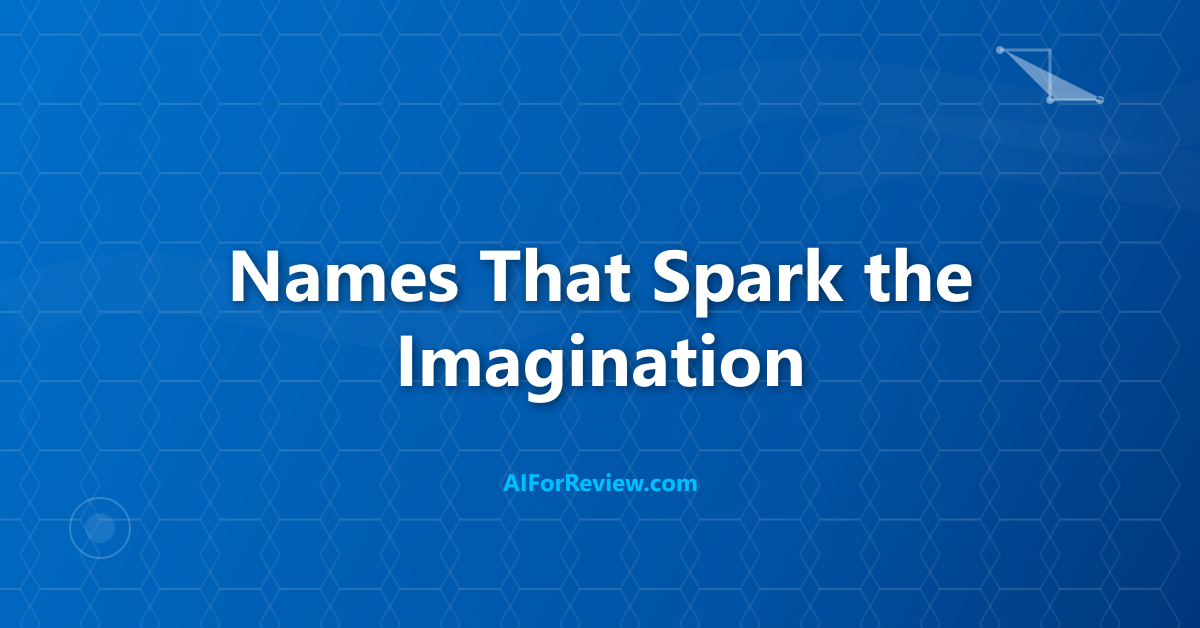Why do animal-inspired LLaMA model code names like Alpaca instantly make sense, while version numbers only cause confusion? Meta’s creative naming approach gives us clear clues about what each model does, making it far easier to pick the right tool and understand its strengths. Discover how these memorable code names are changing the way we think about AI models and why they offer more clarity than any string of numbers ever could.
Oh fantastic, we have reached the point where AI companies are better at naming their internal development projects than the actual products they release to the public. Meta’s engineers apparently looked at their own confusing LLaMA 3.3, 3.4, 3.5 numbering disaster and thought “you know what, let’s keep the good names for ourselves and give users the mathematical soup that makes no sense.” It is like having a perfectly organized spice rack in your kitchen but serving guests food labeled only with random numbers.
But here is the delicious irony that makes this actually fascinating: Meta’s internal code names are so much more informative and logical than their public version numbers that they accidentally created a better naming system while trying to organize their own development chaos. The code names actually tell you something useful about what each model does, unlike the version numbers that require a PhD in Meta-ology to understand.
If you read my earlier posts about LLaMA’s performance advantages and Meta’s scaling decisions, you will see that their internal naming system reflects the same practical, user-focused thinking that makes their models technically superior to the competition.
The Animal Kingdom That Actually Makes Sense
Meta’s internal LLaMA code names use animal themes that correspond to specific model characteristics and capabilities, creating an intuitive system that immediately communicates what each variant does.
“Alpaca” represents models optimized for instruction following and general-purpose tasks, reflecting the animal’s reputation for being trainable and reliable. This code name immediately tells developers that these models prioritize following user instructions accurately.
“Vicuna” indicates models focused on conversational abilities and natural dialogue, named after animals known for their social communication skills. The name signals that these variants excel at maintaining context and engaging in natural conversations.
“Guanaco” designates models optimized for reasoning and complex problem-solving, referencing animals known for their intelligence and adaptability in challenging environments. This code name communicates advanced analytical capabilities.
Internal Code Name System:
| Code Name | Animal Characteristics | Model Focus | User Benefit | Public Equivalent |
|---|---|---|---|---|
| Alpaca | Trainable, reliable | Instruction following | Accurate responses | LLaMA 3.3 |
| Vicuna | Social, communicative | Conversational AI | Natural dialogue | LLaMA 3.4 |
| Guanaco | Intelligent, adaptable | Complex reasoning | Problem solving | LLaMA 3.5 |
| Chinchilla | Efficient, agile | Speed optimization | Fast processing | Internal only |
The animal naming system provides immediate understanding of model capabilities without requiring users to research version histories or technical specifications.
Why Code Names Communicate Better Than Numbers
The descriptive nature of animal code names solves communication problems that plague numerical version systems across the AI industry.
Animal characteristics create natural mental models that help users understand model capabilities and choose appropriate variants for their specific needs. “Alpaca” suggests reliability and trainability in ways that “3.3” never could.
The naming system scales naturally as new models are developed, with additional animals providing clear differentiation without creating false hierarchies or chronological confusion that affects numerical systems.
Cultural associations with different animals transcend language barriers and technical expertise, making the naming system accessible to users regardless of their background or familiarity with AI development.
The memorable nature of animal names makes it easier for users to remember which model worked well for specific tasks and recommend appropriate variants to colleagues or collaborators.
The Development Philosophy Behind Better Names
Meta’s internal naming reflects a development philosophy that prioritizes practical utility and user understanding over marketing appeal or technical complexity.
The engineering teams chose names that communicate actual model behavior rather than suggesting arbitrary hierarchies or performance rankings that may not reflect real-world utility for specific applications.
The animal theme creates consistency across the development process while allowing for natural expansion as new model variants are created for different optimization goals or use cases.
The naming system encourages developers to think about model characteristics and intended applications rather than simply assuming that higher numbers indicate better performance.
How Internal Names Reveal Model Priorities
The specific animals chosen for LLaMA code names reveal Meta’s internal priorities and development focus areas that are not apparent from public version numbers.
“Alpaca” prioritization shows Meta’s focus on creating models that reliably follow user instructions, addressing one of the most common complaints about AI systems that ignore or misinterpret user requests.
“Vicuna” development indicates significant investment in conversational capabilities and context maintenance, reflecting user needs for AI that can engage in natural, extended dialogues.
“Guanaco” optimization reveals Meta’s commitment to reasoning capabilities that can handle complex analytical tasks, competing directly with proprietary models known for advanced reasoning.
The absence of certain animal names in public releases suggests that Meta maintains internal model variants with capabilities or optimizations that have not been publicly released.
The Marketing vs Engineering Disconnect
The gap between Meta’s logical internal naming and confusing public version numbers reveals a disconnect between engineering priorities and marketing decisions that affects user experience.
Engineering teams naturally gravitated toward descriptive names that communicate model capabilities because they need to quickly understand and differentiate between multiple development variants during the creation process.
Marketing teams apparently decided that numerical versions would be more familiar to users accustomed to software versioning, ignoring the fact that AI models do not follow traditional software development patterns.
The result is a system where internal developers have clear, informative names while external users struggle with confusing numbers that provide no useful information about model capabilities or appropriate use cases.
What Users Miss by Not Having Code Names
The public’s lack of access to Meta’s descriptive code names creates practical problems for model selection and usage that could be easily avoided with better naming.
Users spend significant time researching model capabilities and performance characteristics that would be immediately apparent from descriptive names like “Alpaca” or “Vicuna.”
The confusion created by version numbers leads to suboptimal model selection where users choose based on assumptions about numerical progression rather than actual suitability for their specific needs.
Technical discussions and documentation become more complex when using arbitrary numbers rather than descriptive names that communicate model characteristics and intended applications.
User Impact of Poor Public Naming:
| Problem | Current Impact | Code Name Solution | User Benefit |
|---|---|---|---|
| Model Selection Confusion | Research required | Immediate clarity | Time savings |
| Performance Assumptions | Wrong model choice | Capability communication | Better results |
| Technical Communication | Complex explanations | Descriptive references | Clear discussions |
| Documentation Complexity | Version tracking needed | Characteristic focus | Easier understanding |
The naming disconnect creates unnecessary barriers between users and the AI capabilities they need for their applications.
How Other Companies Could Learn
Meta’s internal naming success demonstrates how descriptive naming systems can improve both development processes and user experience across the AI industry.
The animal theme provides a scalable framework that other companies could adapt with their own consistent naming conventions that communicate model characteristics rather than arbitrary hierarchies.
The focus on capability communication rather than version progression offers a model for naming systems that help users make better decisions about AI model selection and usage.
The success of internal descriptive naming suggests that AI companies should prioritize user understanding over traditional software versioning conventions that do not apply well to AI model development.
The Future of AI Model Naming
Meta’s code name success points toward future naming conventions that prioritize descriptive communication over numerical progression or marketing appeal.
The AI industry may evolve toward naming systems that clearly communicate model capabilities, optimization focuses, and intended use cases rather than creating confusion with arbitrary version numbers.
User demand for clearer model differentiation may force companies to adopt more descriptive naming that helps users understand which models are appropriate for their specific applications.
The competitive advantage of clear communication may drive industry adoption of naming conventions that prioritize user understanding over internal development convenience or marketing preferences.
What This Means for AI Users
Understanding Meta’s internal naming philosophy helps users better evaluate AI models and make more informed decisions about which variants are appropriate for their specific needs.
The code name system demonstrates that AI model capabilities are more important than version numbers or marketing names when choosing tools for practical applications.
Users should focus on understanding model characteristics and optimization focuses rather than assuming that higher version numbers or newer release dates indicate better performance for their use cases.
The success of descriptive naming suggests that users should advocate for clearer model communication from AI companies rather than accepting confusing version systems that make model selection unnecessarily difficult.
Key Takeaways for Better AI Understanding
Meta’s superior internal naming system teaches important lessons about how AI model communication could be improved to better serve user needs and decision-making processes.
Descriptive names that communicate model capabilities provide more value than numerical versions that create false hierarchies and chronological confusion about model relationships and appropriate applications.
The disconnect between internal and external naming reveals how AI companies often prioritize marketing considerations over user understanding, creating unnecessary barriers to effective AI adoption and usage.
Understanding the principles behind better naming helps users evaluate AI models more effectively and advocate for clearer communication from AI companies about model capabilities and intended use cases.
The lesson extends beyond naming to the broader need for AI industry communication that prioritizes user understanding and practical utility over marketing appeal and technical complexity that serves company interests rather than user needs.
Meta’s code name success demonstrates that better AI communication is possible and beneficial for both developers and users when companies prioritize clarity and practical utility over conventional naming approaches that do not serve AI model characteristics effectively.
Frequently Asked Questions
What makes code names like Alpaca or Vicuna more helpful than version numbers for LLaMA models?
Code names such as Alpaca or Vicuna give clear hints about what a model is designed to do or what its strengths are, while version numbers like 3.3 or 3.5 do not explain how models differ or what improvements to expect.
Why do version numbers cause confusion when choosing a LLaMA model?
Version numbers can make us think that higher numbers always mean newer or better models, but this is not always true, which can lead to mistakes when picking the right model for a specific need.
How do Meta’s internal code names help with understanding model updates and features?
Internal code names are chosen to reflect the model’s focus or changes, so we can quickly see what is new or special about each version without needing to look up technical details.



